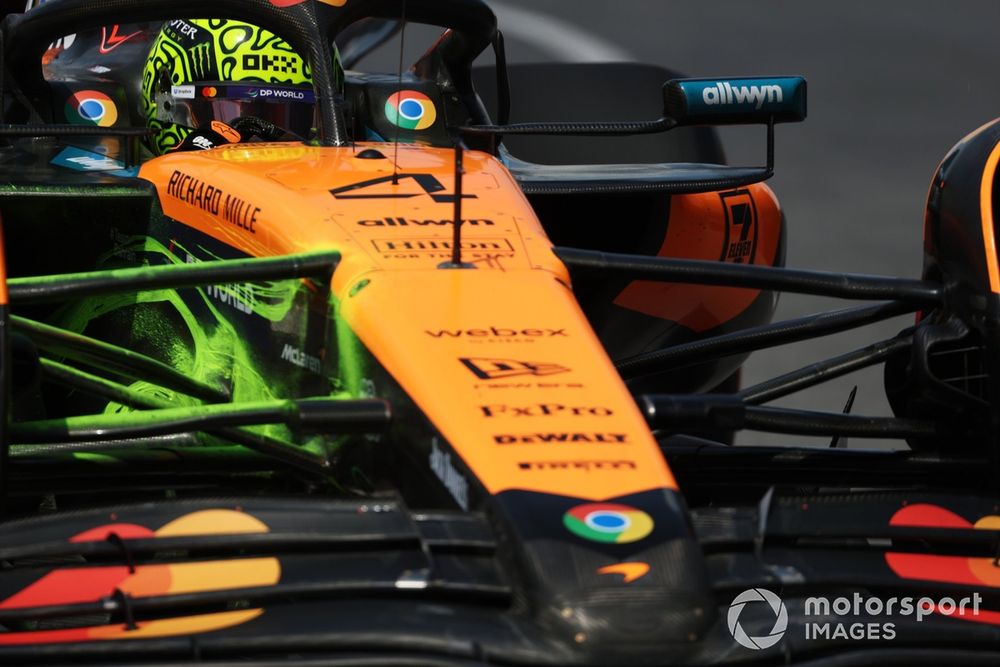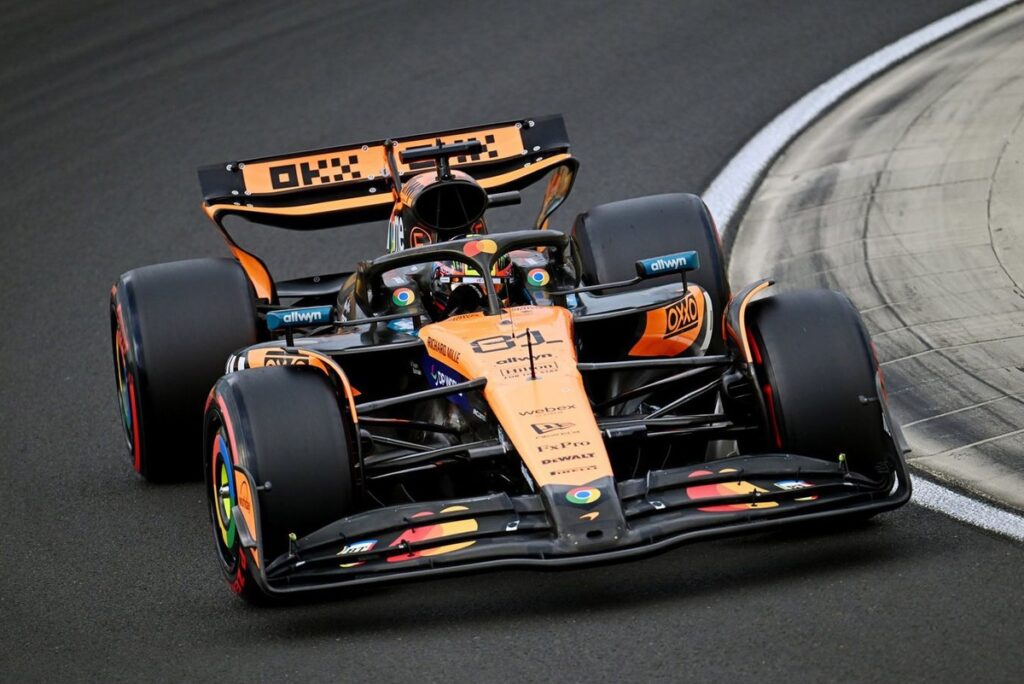One of the foundations of McLaren’s successes in Formula 1 over the past two years has been in the team’s in-season development of its cars, following its immediate turnaround in form at the 2023 Austrian Grand Prix.
McLaren had identified a series of inefficiencies in the aerodynamic platform of that year’s MCL60 in the season’s prelude, prompting a restructure of its technical department and a heavy development cycle planned to breathe life back into the team.
With a considerable upgrade for 2023’s Red Bull Ring race, McLaren went from scoring occasional points to making the podium frequently; although the basis of 2024’s follow-up (the MCL38) started further up the field, only a Miami floor upgrade put the team on the path to its eventual constructors’ title win.
The Woking team has continued to build that forward momentum, and its MCL39 has been the class of the field throughout 2025 – and its nearest rivals have been unable to challenge consistently.
It is regarded that McLaren’s correlation processes at base are the class of the field, to the point where it seems every update meshes with the already existing package to enhance the performance. Team principal Andrea Stella believes that this is due to the team getting the “fundamentals” behind each new potential upgrade right.
“This trend that we have been able to establish, whereby developments – being them from a mechanical point of view, but above all aerodynamic – have been successful, is the result of many factors,” Stella said.
Andrea Stella, Team Principal, McLaren F1 Team
Photo by: Simon Galloway / Motorsport Images
“There’s not much in Formula 1 fundamental for success that is a magic bullet. It’s really the result of working on the fundamentals.
“The fundamentals don’t only involve the capacity to generate ideas, to create the next geometry for a floor or a front wing, but they also involve understanding the methodologies you use for this development – and understanding when these methodologies will be not only effective in being innovative, but also in giving you the confidence that what you have achieved in development in the wind tunnel or CFD will actually transfer into something that works trackside.
“This is part of generating the knowhow as a team, which in itself is a very simple statement – ‘let’s generate the knowhow to have the best correlation’ – but in reality, is possibly one of the most complicated battlegrounds for any Formula 1 team.
“We have invested a lot from this point of view. I have to praise the quality of the people because even if we talk methodologies, they are always led by people. I have been very lucky that I could lean on very competent leaders and a very talented team.”
Correlation in this instance, of course, is measured as a team gathers its data across its various simulation tools and finds that the data patterns are generally experienced on track during practice sessions. It may be that the actual numbers themselves are out by a small factor but, as long as this factor remains consistent, a team can adjust to that discrepancy in further simulation work.
Naturally, when that factor is wildly inconsistent through all facets of a car’s attributes, that’s when the problems start to arise. McLaren does not appear to be falling foul of this. The team also tends to take its time with an updated part, where it tries it in practice and then reviews the data back at base before using it in the rest of the weekend.
Note the front wing McLaren first registered in Canada, for example; the team tried it in Friday practice, but did not race with it until it had digested that data. It was then pressed into service in a competitive session for the first time in Austria.

Lando Norris, McLaren
Photo by: Sam Bloxham / Motorsport Images
Reviewing his team’s form in 2025, Stella admitted that the level of competitiveness had been a surprise to him – but was keen to point out that the team took an ‘aggressive’ approach to evolving last year’s car.
The team had been set the target to clear the bar set by the other frontrunning teams on a consistent basis, and Stella said the continued development was due to its pre-season estimates in the margin over the other teams not being sufficient.
“I’ve been surprised by this level of competitiveness. When last year we discussed how much effort we wanted to put in improving the 2024 car, we definitely wanted to be very ambitious,” he added.
“We wanted to try and clear the ‘going into race weekends and you never know who’s going to win’ situation we had last year, and we thought we needed to do a little bit more than the normal development.
“So how do we do that? We embraced a very aggressive approach to innovation. The MCL39 is a very innovative car. From an engineering point of view, we’ve been nervous as to some solutions – whether we were actually in the condition to deliver them.
“But then when we looked at the lap times and the numbers in simulations, actually, we thought that wouldn’t be enough. At the start of the season, effectively it wasn’t enough.
“That’s a factor that has happened during this season, which is the car has actually been upgraded.”
In this article
Be the first to know and subscribe for real-time news email updates on these topics
Read the full article here

